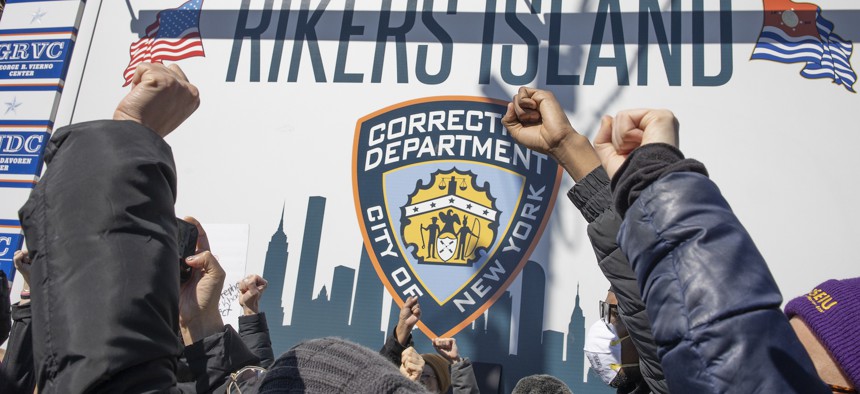Recently, after weeks of resisting efforts to roll back hard-won changes to New York’s bail laws, Gov. Kathy Hochul capitulated to pressure from rivals within her party (including former-Gov. Andrew Cuomo) and across the aisle and formed plans to weaken bail reform. This turnabout by Gov. Hochul, who until recently had urged patience on this issue, and former Gov. Cuomo, who signed two bail reform laws just since 2019, has some suggesting that public safety is becoming a political cudgel.
“I don’t think our public safety should be politicized,” stated Sen. Jessica Ramos. State Republican Chair Nick Langworthy said “Kathy Hochul is the definition of a craven, phony politician. She said she wouldn’t budge off the bail law … but her disgraced former partner Andrew Cuomo pipes up and all of a sudden, she has seen the light.” As hyperbole and abrupt policy reversals get invoked with abandon, it is important to remember why bail policy was reformed in the first place and examine what its outcomes have been so far.
New York’s landmark bail reforms went into effect in January 2020 in order to separate liberty from wealth and safely reduce the incarceration of people accused of non-violent offenses and misdemeanors. In the lead-up to the reforms, two nationally-publicized New York cases galvanized attention to the issue.
Kalief Browder was incarcerated pretrial for three years in New York City’s notorious Rikers Island jail at age 16 for stealing a backpack because his family was unable to pay $3,000 bail. There, he was physically abused by staff and other incarcerated people and spent two years in solitary confinement. He consistently maintained his innocence and the charges against him were ultimately dropped. Two years after his release, he committed suicide.
In 2018, movie producer Harvey Weinstein was accused of rape and sexual abuse. He immediately posted $1 million bail and was freed. Even when his bail was doubled after he mishandled his electronic monitor (57 times!), he was able to avoid pretrial confinement.
As civil rights lawyer Bryan Stevenson has said, it seems as though the system “treats you better if you’re rich and guilty than if you’re poor and innocent.”
The reforms that passed in 2019 were a compromise between those defending the status quo and those who wanted money bail completely abolished. The new law allowed bail to be set for those arrested for violent offenses but not for most non-violent offenses. In 85% of cases where bail is set, it is unaffordable and the person is incarcerated pretrial like Kalief Browder was.
Pretrial rearrest rates have been almost identical pre- and post-bail reform. In 2019, the year prior to the reforms, 95% of those released pretrial in New York City were not rearrested for violent felonies, similar to 97% who were not rearrested (statewide) for violent felonies after bail reform went into effect. Fewer than 1% of those released pretrial after bail reform were arrested for a firearm charge.
Although shootings and homicides have risen in New York over the last two years, they have risen nationally as people grapple with severe disruption and attendant psychological effects from the pandemic. More than a dozen cities that did not enact bail reforms had increases in murders exceeding New York City’s. After former Police Commissioner Dermot Shea attributed the city’s increase in shootings to bail reform, the New York Post examined data on 528 shootings over the first six months of 2020 and found that just one person released under the reforms had been charged with a shooting.
Opponents of the reforms and some news media have been so eager to blame violent crime on bail reform that there have been several occasions of inaccurate reporting followed by (less well publicized) story retractions. On January 13, 2020, Newsday erroneously reported that bail reform was why a Long Island man who had three prior DUIs was released pretrial after he was arrested for a fatal DUI. While that story got 30,500 interactions on Facebook, Newsday’s retraction received only 2,100 interactions.
Pretrial detention may actually make us less safe, as it rips people away from their homes, jobs, and families. Research in New York City, Miami, Pittsburgh, and Houston has found that people detained pretrial have a modestly greater risk of offending upon eventual release. As Correction Commissioner, I saw people come out of Rikers Island’s awful jails worse than they entered every day.
In over 40 years in criminal justice, I’ve often witnessed elected officials seek to aggrandize themselves during times of heightened fear. That is how the current era of mass incarceration was born, leaving the United States with 4% of the world’s population and around 20% of the world’s prisoners. The Assembly and state Senate should resist calls to roll back bail reforms any further, and instead expand pretrial supports and supervision for those who need them.
Vincent Schiraldi is former Commissioner of New York City’s Departments of Correction and Probation. He is a Senior Fellow at the Columbia Justice Lab and Senior Research Scientist at the Columbia School of Social Work.
NEXT STORY: Will CUNY move closer to offering free tuition?


